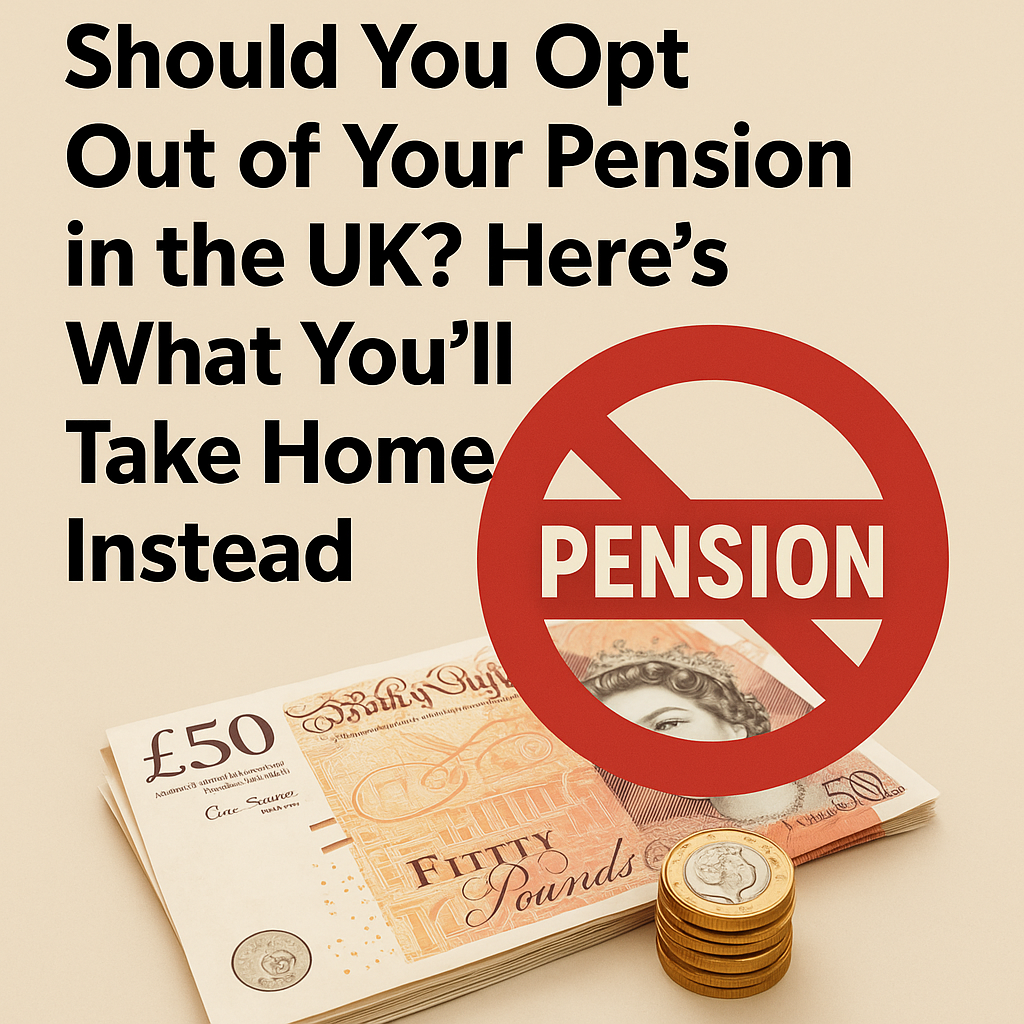
Auto-enrolment into workplace pensions is standard in the UK, but what if you opt out? Would your payslip look better, or are you missing out on long-term benefits?
In this guide, we break down what really happens to your take-home pay when you stop contributing to your pension — and whether it’s worth it.
The Basics of Opting Out
When you’re automatically enrolled in a workplace pension, a portion of your salary is contributed every month. Typically:
- You contribute: 5% of your gross salary
- Your employer contributes: 3%
- You get tax relief: Usually 20% from HMRC
So opting out means you stop losing 5% of your salary, but you also give up employer contributions and tax relief.
UK Salary & Tax Breakdown Calculator
If you live in Scotland, income tax is calculated differently.
Rates and thresholds set by Scottish Government.
A common tax code is “1257L” meaning £12,570 tax-free allowance. Check your payslip, P60, or HMRC letter for your correct code.
• Plan 1: Started before September 2012 in England/Wales
• Plan 2: Started after September 2012 in England/Wales
• Plan 4: Scottish students
• Postgraduate Loan: For master’s/PhD courses
Your payslip or SLC account will confirm your plan.
Take-Home Pay With vs Without Pension
Let’s compare the take-home pay for someone earning £30,000 a year.
Option 1: Stay Enrolled (5% employee contribution)
- Gross salary: £30,000
- Pension contribution: £1,500
- Employer adds: £900 (free money)
- Net pay: ~£24,650
- Pension pot after 1 year: £2,400
Option 2: Opt Out
- Gross salary: £30,000
- No pension deduction
- Net pay: ~£25,650
- Pension pot: £0
You get about £1,000 extra in your pocket per year — but miss out on £2,400 in pension contributions.
Pros and Cons of Opting Out
Pros:
- More immediate take-home pay
- Useful if you’re facing short-term financial strain
- Flexibility to save or invest elsewhere
Cons:
- You lose employer contributions (essentially free money)
- No tax relief
- Reduced retirement savings
- Might delay retirement age or reduce retirement income
Who Might Consider Opting Out?
- Those struggling with cost-of-living and need every penny now
- People with high-interest debt to repay
- Temporary workers or those planning to leave their job soon
But even then, opting out should ideally be short-term.
The Smart Middle Ground
Some employers let you reduce your contributions instead of opting out entirely. Even 2% or 3% keeps the employer match going.
You can also look at Salary Sacrifice schemes — these reduce your taxable income and National Insurance, helping you save more efficiently.
Opting out of your pension might increase your take-home pay today, but at the cost of long-term savings and employer contributions. For most people, staying enrolled — even at a lower rate — is the smarter move.
Use our Take-Home Pay Calculator to model your own scenario and see how your payslip changes with or without pension contributions.

